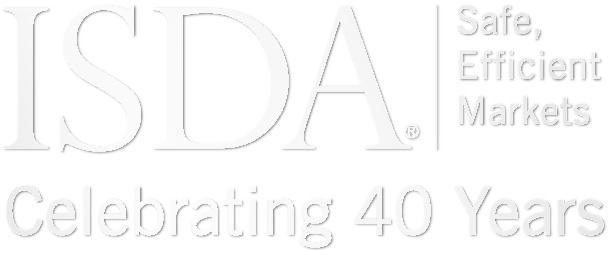
ISDA Chief Executive Officer Scott O'Malia offers informal comments on important OTC derivatives issues in derivatiViews, reflecting ISDA's long-held commitment to making the market safer and more efficient.
At the end of last week, ISDA launched the IBOR Fallbacks Supplement and protocol, so that market participants can incorporate robust contractual fallbacks into their new and legacy derivatives contracts referenced to key interbank offered rates (IBORs). During a two-week ‘escrow’ period running up to the launch on October 23, 257 entities across 14 jurisdictions adhered to the protocol on a binding but non-public basis, highlighting just how important fallbacks are for derivatives users around the world.
It is impossible to overstate the significance of fallbacks, both in mitigating the systemic risk that would arise from the cessation of a key IBOR and in moving the industry a step further in the long journey away from LIBOR. ISDA has been working on the development of fallbacks for nearly four years. This has involved complex, technical work in collaboration with the industry and regulators on the adjustments that would be applied to a risk-free rate (RFR) so it could replace an IBOR as a reference rate without materially changing the original objectives of the transaction.
On October 1, ISDA received a positive business review letter from the US Department of Justice, indicating the fallbacks should not produce anticompetitive effects. After other competition authorities had been notified of the letter, we were able to begin the adherence process. Now the fallbacks have been launched, we are confident the next three months running up to the effective date on January 25, 2021 will see widespread adoption across the industry.
While fallbacks should not be used as the primary means of transitioning to the RFRs, they will act as a critical safety net and risk mitigant, ensuring contracts that continue to reference IBORs switch to the adjusted RFR fallback if an IBOR ceases to exist or, in the case of LIBOR, is deemed by the UK Financial Conduct Authority to be non-representative of its underlying market.
With the fallbacks safety net in place, a major milestone in benchmark reform has been achieved, and market participants should be able to turn their attention more fully to voluntary RFR adoption. There are just 14 months to go until the end of 2021, after which LIBOR is likely to cease publication, so building momentum and liquidity in the alternative rates must now be a priority for the whole market.
The ISDA-Clarus RFR Adoption Indicator, which tracks interest rate derivatives trading referencing RFRs in six major currencies (measured by DV01), jumped from 6.4% to 9.5% in September. In sterling markets, 39.2% of interest rate derivatives trading referenced SONIA in September. While only 4.1% of US dollar swaps trading referenced SOFR last month, recent reports of record volumes after central counterparties switched to SOFR for price alignment interest and discounting suggest the October indicator could show marked gains.
Clearly, work is still required to build deep and liquid markets based on the RFRs, but there is no doubt that liquidity is moving in the right direction. ISDA’s ongoing work on benchmark reform will help to support this. We will produce standard definitions for daily RFRs that can be used in new transactions, as well as materials for compounding conventions and non-linear products. Standard definitions for new RFR-based swap rates will also be developed and fallbacks to these will be added to existing IBOR-based swap rate definitions.
In the meantime, there are just three months to go until the IBOR fallbacks take effect. The protocol has already gained widespread support from both the market and the official sector, and most major banks across key jurisdictions have now adhered. For firms that may have been waiting for greater certainty, now is the time to sign up, well ahead of the effective date, in order to get a crucial piece of the LIBOR transition puzzle into place.
ISDA will hold a virtual event on the IBOR fallbacks on November 9-10. Further details are available here.
Watch a short explanatory video on the IBOR fallbacks here.
Latest
From Milestone to Modernization
We’re coming to the end of an exceptionally busy year at ISDA, in which we celebrated our 40th anniversary and doubled down on our enduring commitment to safe and efficient derivatives markets. Reflecting on ISDA’s achievements since 1985, it’s clear...
Response on ASIC Derivative Transaction Rules
On December 3, ISDA submitted a response to the Australian Securities and Investments Commission (ASIC) consultation on the remake of the ASIC Derivative Transaction Rules (Clearing) 2015, which are due to sunset on April 1, 2026. ASIC proposed to remake...
IRD Trading Activity Q3 2025
This report analyzes interest rate derivatives (IRD) trading activity reported in Europe. The analysis is based on transactions publicly reported by 30 European approved publication arrangements (APAs) and trading venues (TVs). Key highlights for the third quarter of 2025 include:...
Ardagh Credit Event Processing and Trading
The Credit Derivatives Determinations Committee announced on December 15 that a restructuring credit event has occurred with respect to Ardagh. An ISDA Credit Market Infrastructure Group call was held on December 15 to discuss the processing of this event. The...



